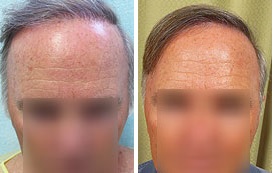article itemscope itemtype=”http://schema.org/CreativeWork”>
Hair Transplant Info : Hair transplant is a surgical way of giving hair back to those who suffer with different types of hair loss. Since the beginning of recorded history, hair has been a symbol of beauty, virility, and youth as well as a source of distress in the face of baldness. And for more than a hundred years, scientist, researchers, doctors, and hair loss specialists have been on a search to find the ultimate cure. Though there still is no cure, hair transplant has become the only permanent solution to provide a natural-looking result long-term.

However, not all surgical treatments were created equal. Ending hair loss and moving forward with surgery requires diligent research and understanding. Pertinent information will help you get back to that sense of beauty, virility, and youth a full head of hair has the power to give.
Hair Transplant Info: MALE PATTERN BALDNESS
Although there are many types of hair loss (from alopecia areata, to traction alopecia, to trichotillomania) and many different causes (from malnourishment, to hormonal changes, to stress, diabetes, lupus, and thyroid dysfunction), the condition to take 95% of the blame is male pattern baldness. Andrgoenic alopecia—the medical term—afflicts more than 40 million men in the United States and also affects over 21 million women (female pattern baldness).
The condition begins in the X chromosomes that carry weak androgen receptors through the family lineage. Inheriting androgenic alopecia causes scalp hair follicles to shrink destructively at the presence of dihydrotestosterone/DHT. Characteristic male pattern baldness results in hairline recession, crown hair loss, and thinning at the mid-top of the scalp.
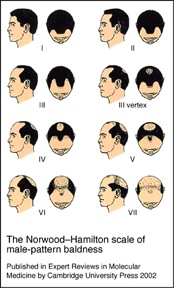
Hair Transplant Info: Hair Restoration Techniques
Hair transplant engaging topic. On the Internet in discussion forums, blogs, hair loss websites, and clinic websites. Of course, consultations are also a valuable source of information. With all of these resources floating around, what is the main piece of knowledge hair loss sufferers should hope to gain? Knowledge of techniques. Although the surgeon is the craftsman who will perform your procedure and design your outcome, you first have to know what technique is best. Then you can begin searching for the best surgeon of that technique.
Past methods of hair restoration that have become largely outdated include punch grafting, scalp reduction, and temporoparietal-occipital flap surgery. For the most part, these highly invasive and risky techniques would end up disfiguring the patient, depleting him of donor hair, and causing permanent nerve damage. Today, they are almost completely obsolete.
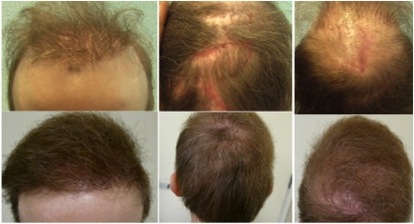
Hair restoration vacillates back and forth between which of these current methods is best:
- Follicular unit transplant (FUT)/strip harvesting
- Follicular unit extraction ( FUE )
- Body hair transplant
Some would argue for FUT because it is quicker and less expensive. The surgery cuts out a linear strip of flesh from the back of the patient’s head, which is then dissected into follicular units for implantation. This excision method leaves an unavoidable strip scar and limits the donor selection to a small area where hair naturally grows thickest in caliber. Thus, harsh hairlines also tend to be an outcome of FUT.
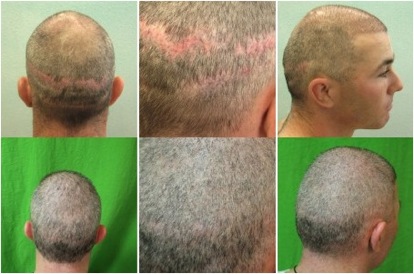
FUE is a long and labor-intensive procedure that removes the follicular units individually from the donor area using a .8 to 1.2mm punch tool. This less invasive approach eliminates the strip scar, produces nominal scarring overall, and allows the surgeon to venture further for donor hair. He/she can select hair from the nape for an enhanced hairline aesthetic.
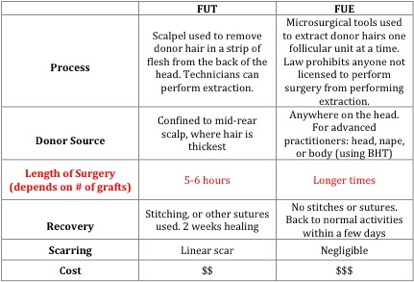
Hair transplant is an area that is constantly evolving. More recent advances include body hair transplant (BHT). This relatively new procedure uses FUE as its basis, employing the microscopic, minimally invasive punch to remove hair from the beard, arms, legs, chest, shoulders, or stomach. BHT is the only technique available capable of restoring a full, natural appearance to severely bald candidates.
Hair Transplant Info: PHOTOS AND VIDEOS
Photos and videos are an incredible resource. The very pertinent and valuable visual documentation of past results can support or undermine the claims of a certain technique. For instance, while FUT claims the linear scar to be only “paper thin,” images of a patient ten years after his strip surgery will likely show that the scar has stretched over the years. And further investigation may tell that this patient is now looking into a second corrective procedure.
Photos and videos have the power to guide you in making the right decision, in order to get the very best outcome. With this visual evidence, you can scrutinize scarring, graft placement, global coverage, hairline design, and crown whorl detail. Quality images will show the before-and-afters in good lighting, in clear focus, and from several different angles so nothing is hidden. Never trust images that look edited or photo-shopped.
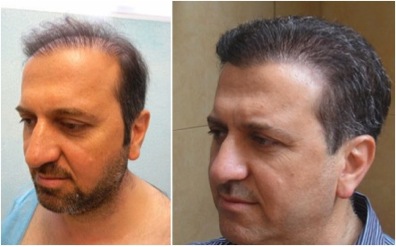
FAQ
What are the flaws of body hair transplant?
While body hair can repair botched prior surgery or reverse severe baldness, it will always act innately. Thus, beard or chest hair implanted in the scalp will be the length, color, and texture it was before transplant. Advanced surgeons will be able to blend body hair incredibly well with surrounding scalp hair, but it may not be a perfect match.
Who is a surgery candidate?
Most hair transplant info will tell you that you need to be over the age of 24, obviously with enough head or body hair to supply the transplant. In addition, you must be free of any medical history denoting blood clotting abnormalities, scarring propensities, or anesthesia allergies.
For more information on Follicular Unit Extraction click here.

